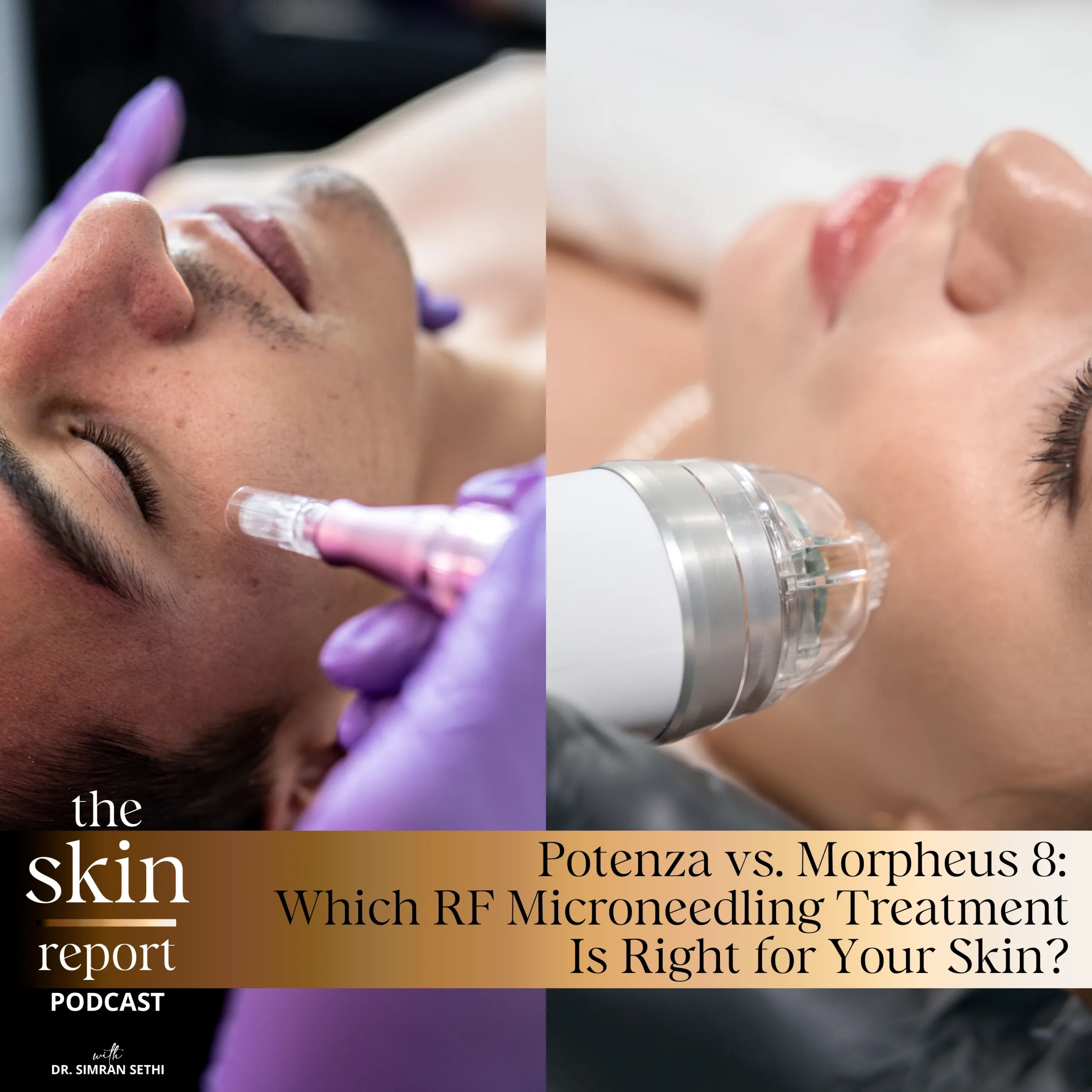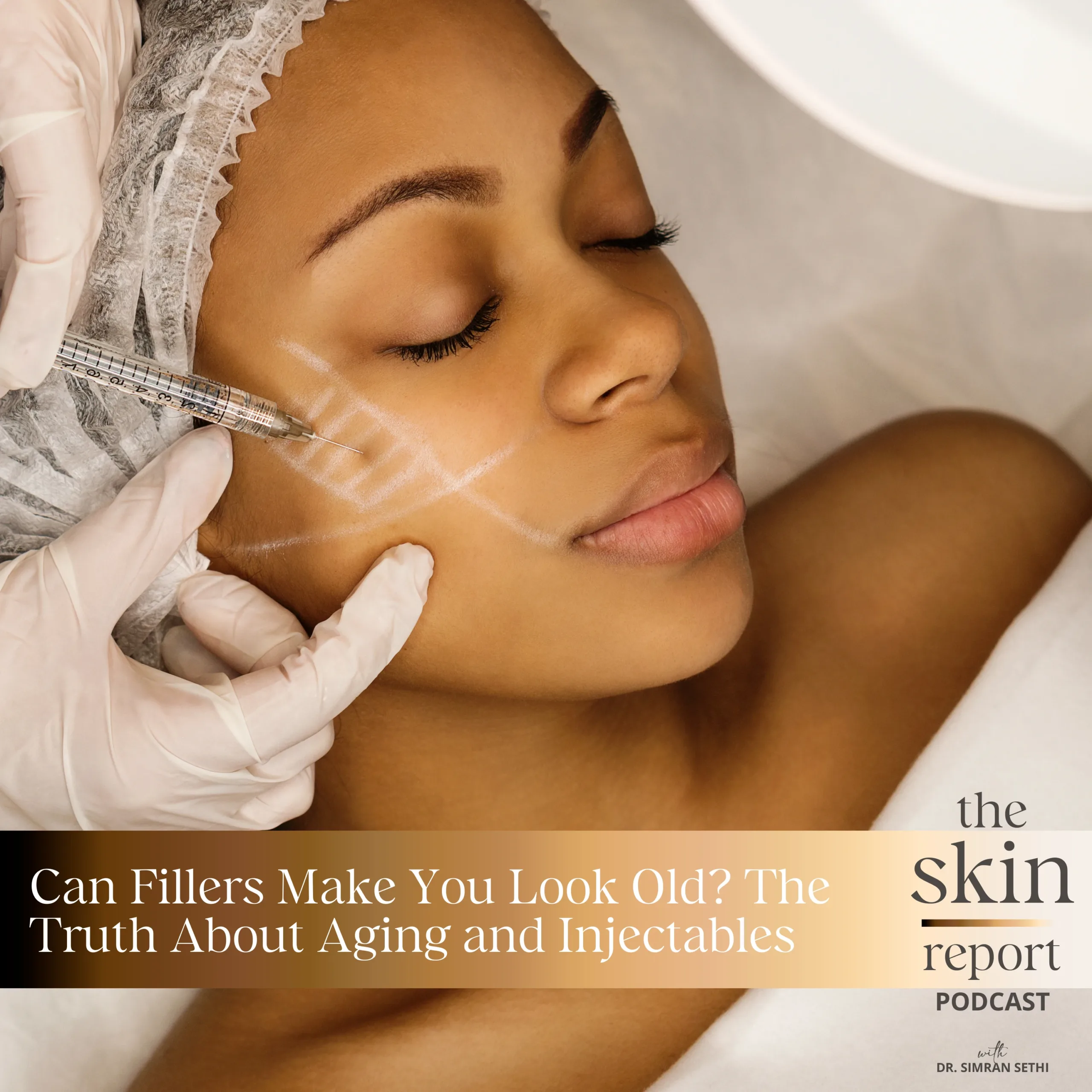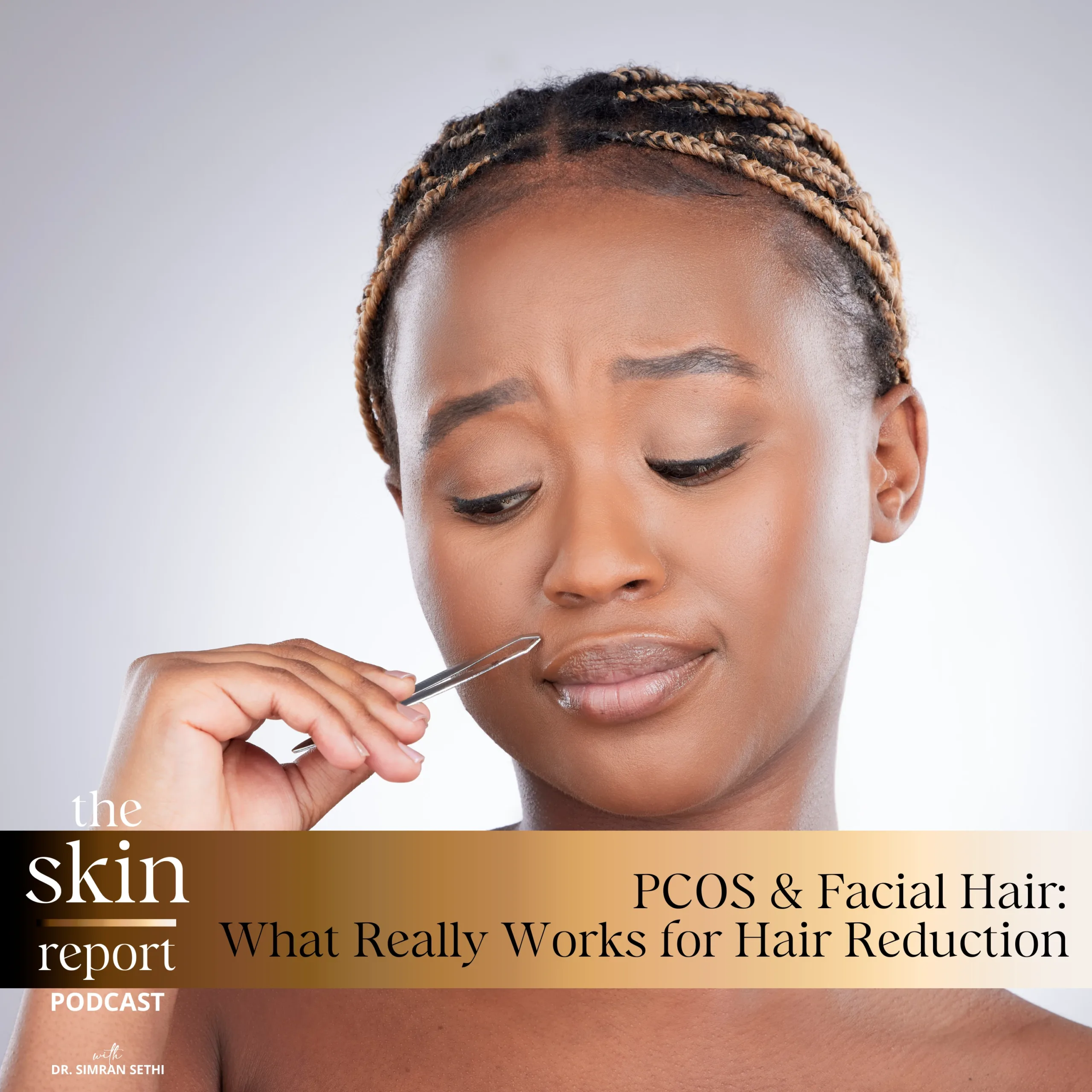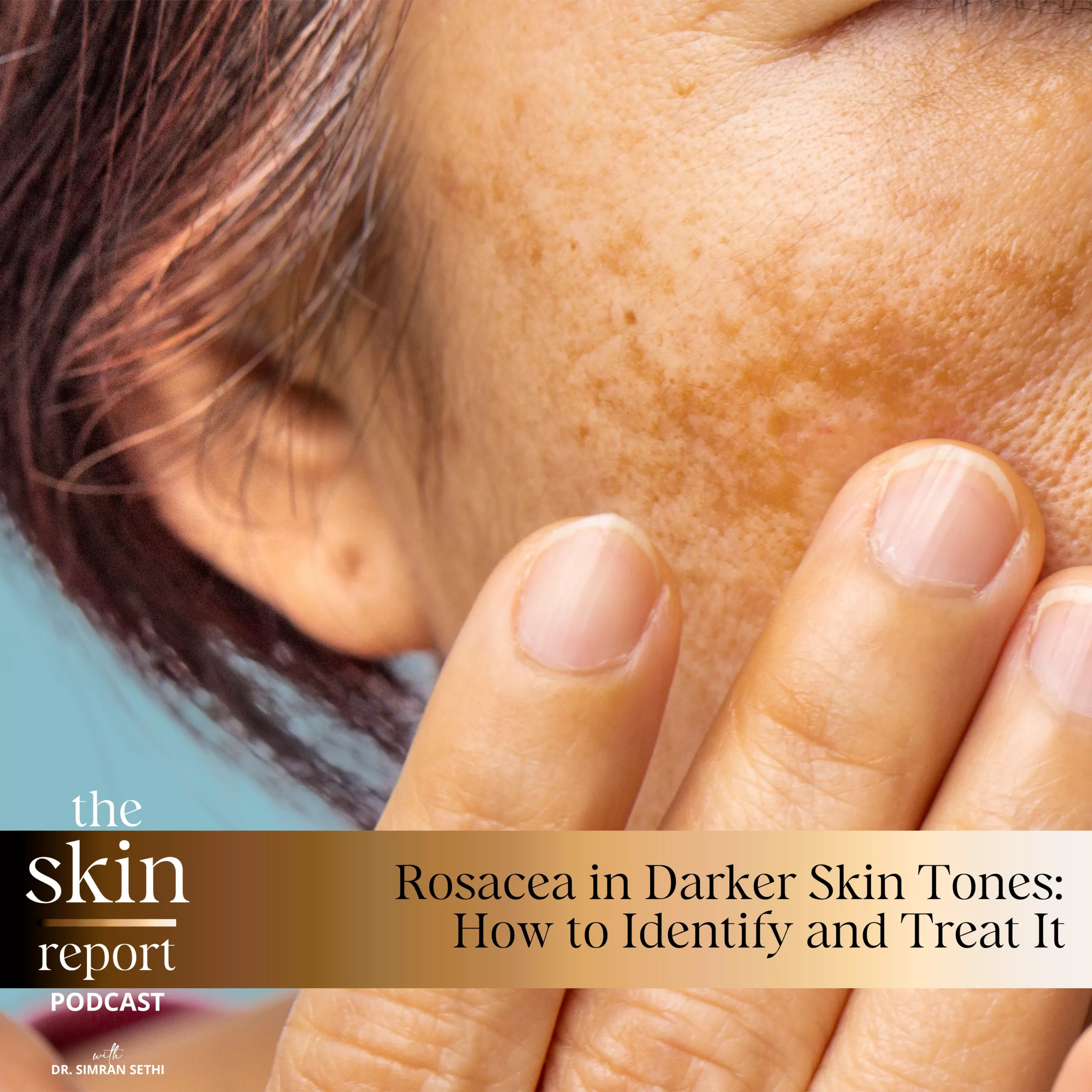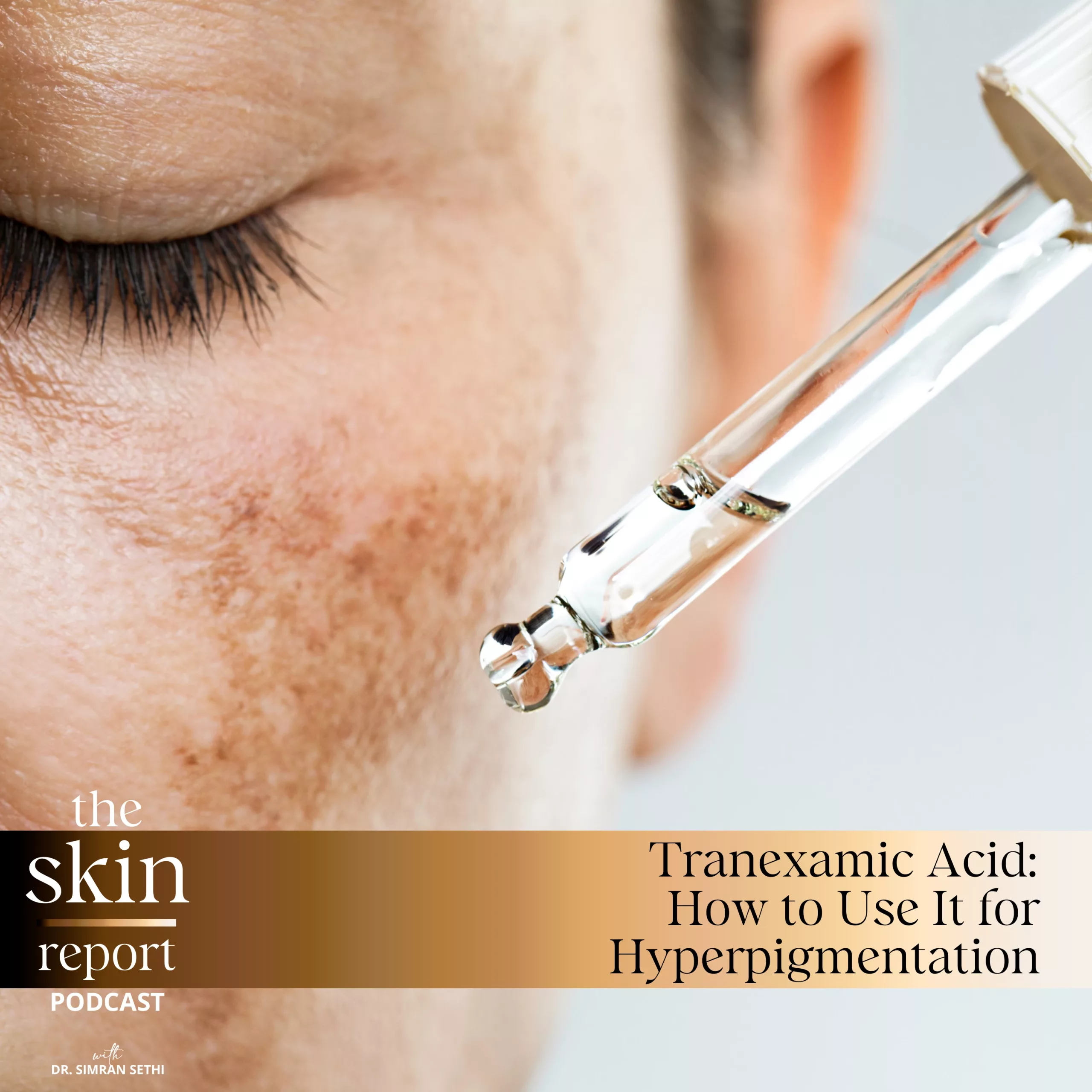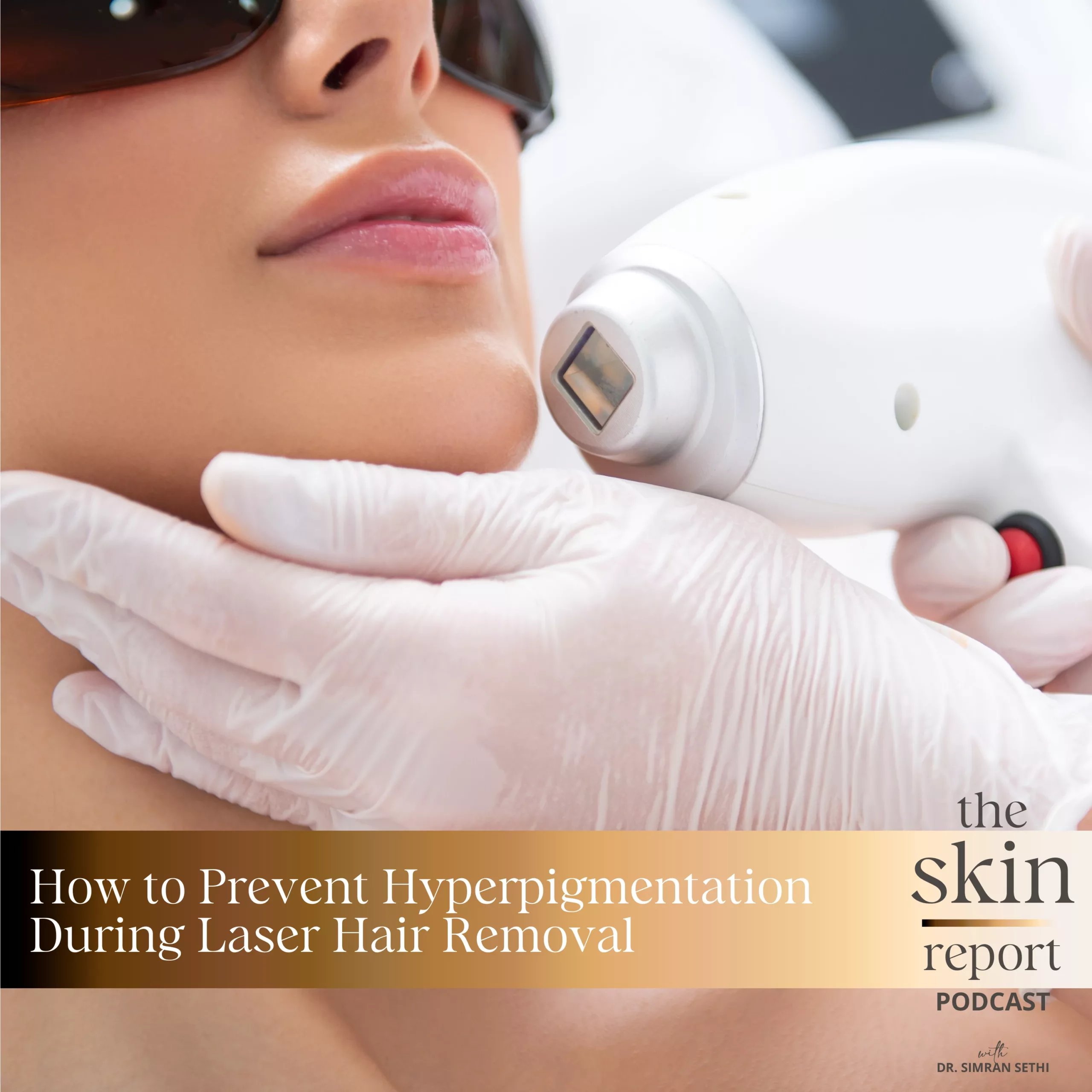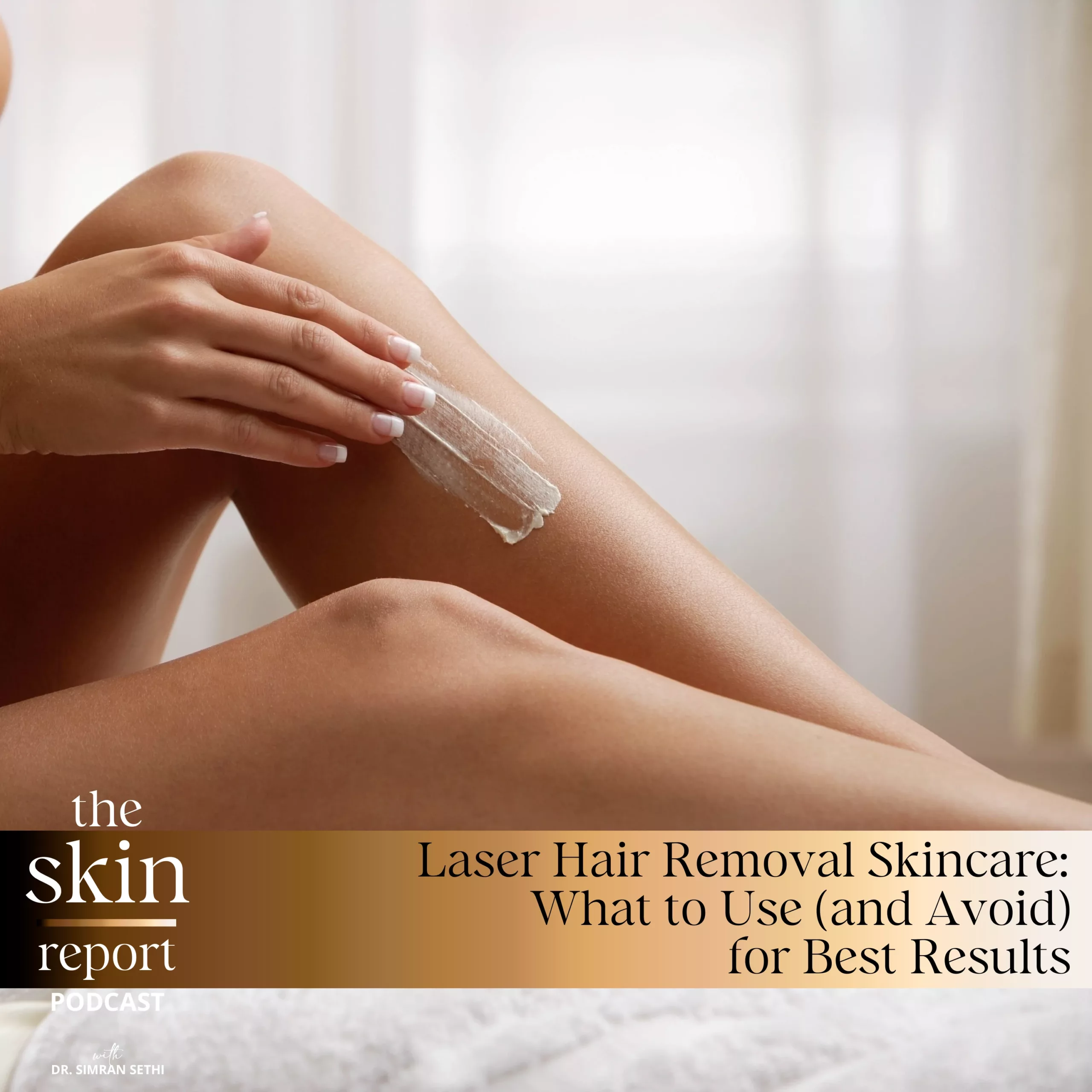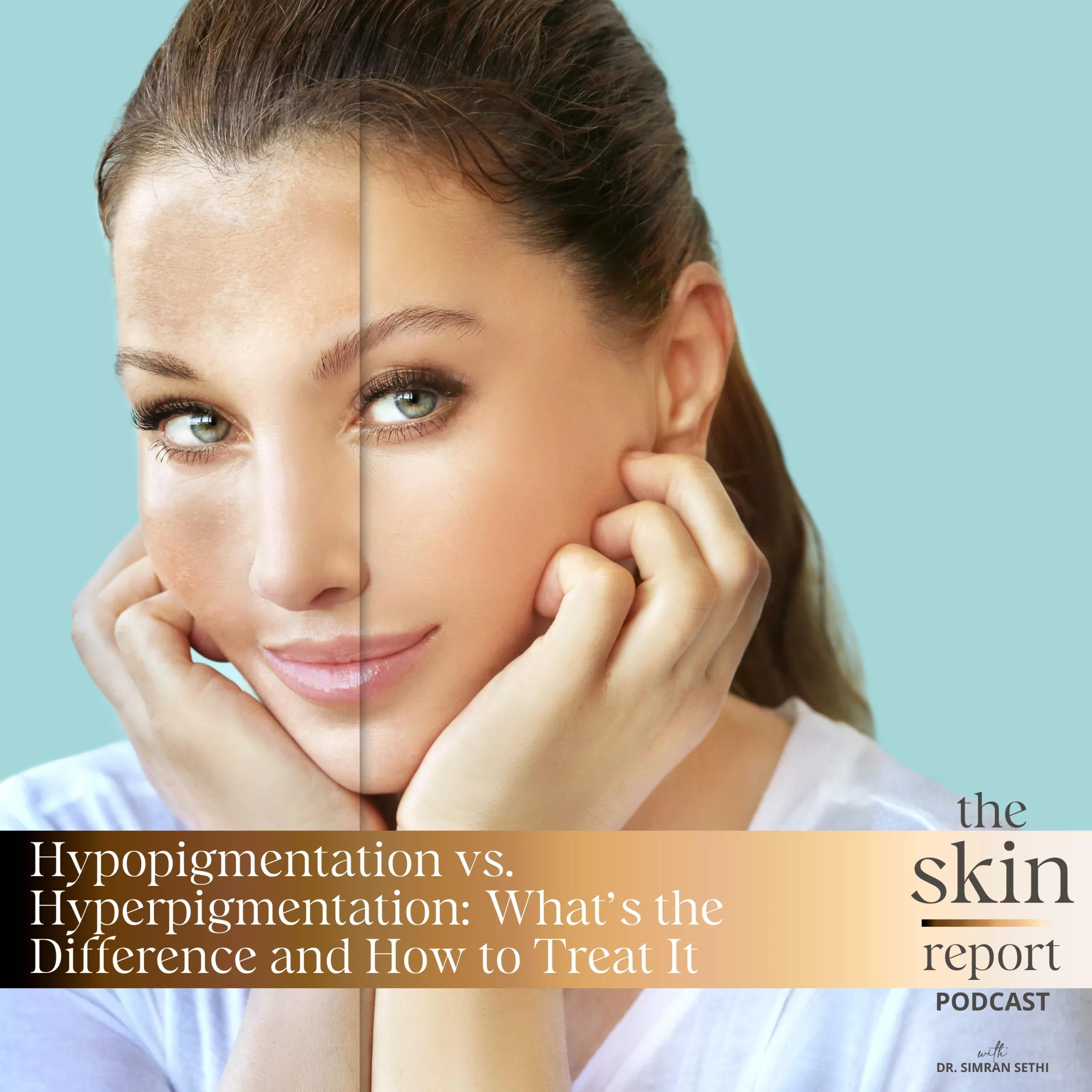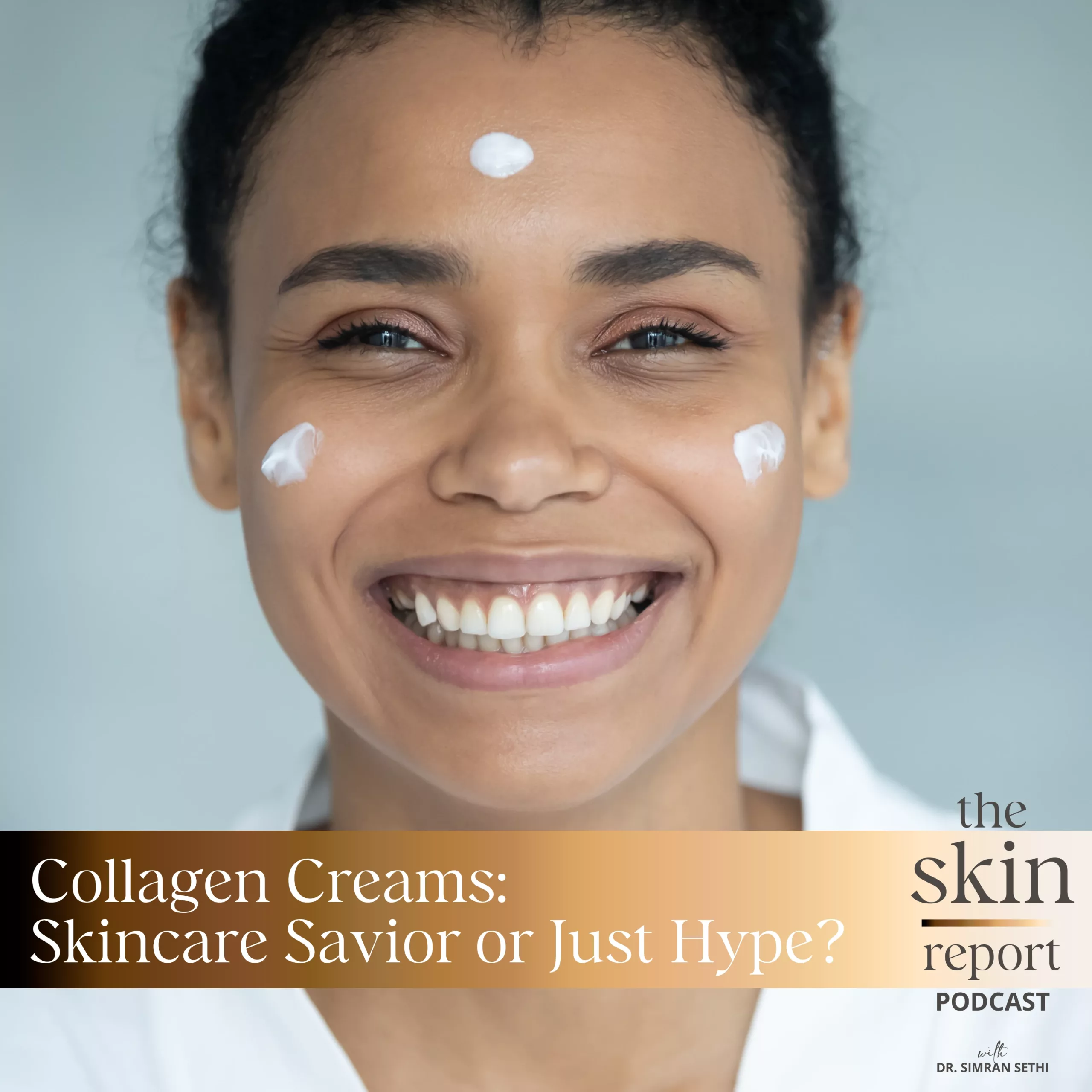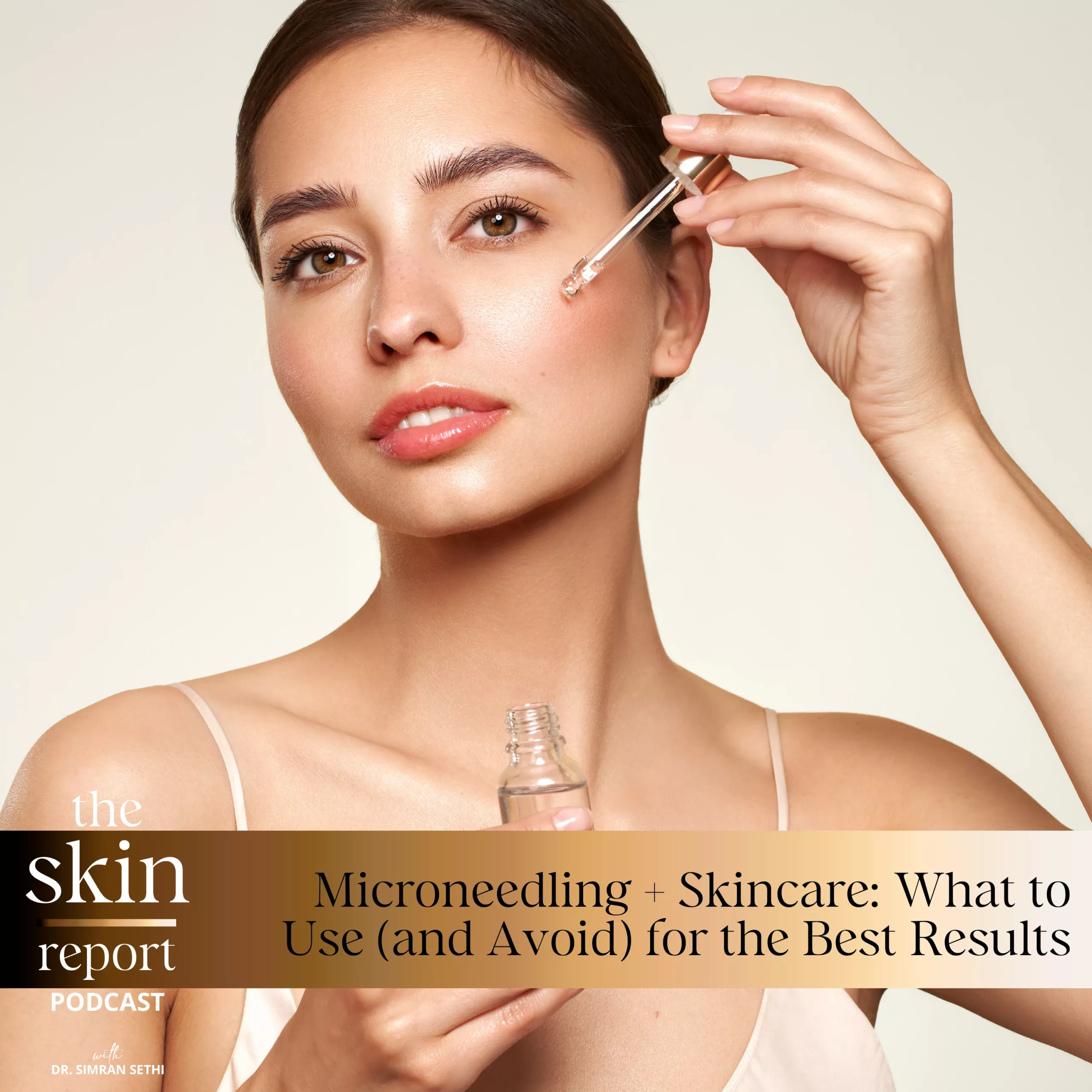You may have heard of medical-grade skincare and its reputation of being more high-quality than drugstore skincare products. But when you see the high prices for medical-grade products and hear about the extensive testing that goes into creating them, you may wonder what all the fuss is about and whether they are really a better alternative. So, what products fall under the category of medical grade skincare anyway, how do they differ from drugstore brands, and what is the FDA’s involvement in the skincare production process?
The Skin Report is a podcast created to educate listeners on methods to improve skin health for people of all ethnicities and ages. On this episode, host Dr. Sethi talks about the ins and outs of medical-grade skincare and the role of the FDA concerning these products. As a professional in internal medicine, Dr. Sethi provides science-backed explanations regarding the different standards surrounding these products, how the FDA approval process keeps us safe, and why she believes medical-grade skincare is worth the hype.
Beauty Instagram: https://www.instagram.com/renewmd_beauty/
RenewMD Beauty Medical Spas, California: https://renewmdwellness.com/
This transcript was exported on August 1, 2022 -view latest version here.
Skincare can sometimes feel overwhelming. Whether it’s finding the right products, ingredients, or treatments there’s a lot out there, but not always for women of color. That’s why I set out to educate myself and others so that we can all feel beautiful in our skin.
Hello and welcome to the Skin Report. I’m Dr. Simran Sethi, an internal medicine doctor, mom of three and CEO and founder of Renew MD Medical Spas and Skin by Dr. Sethi. Today, I want to talk about medical grade skincare and the role of the FDA in beauty products. There’s a lot that goes on below the surface. So let’s dive into it.
First, let’s define what medical grade skin care actually is. How does it defer from drugstore brands and why? Medical grade skin care products can reach the dermis,which is the deepest layer of our skin and where we build essential skin proteins such as collagen and elastin. Over the counter brands, for example, typically only work in the epidermis or the outermost layer of our skin. Medical grade skincare also has higher potency and quality ingredients. Medical grade products will use more stabilized ingredients compared to over the counter, which last longer and take longer to degrade. Even widely available ingredients such as vitamin C will pack a more powerful punch at the medical grade level because of the concentration of vitamin C in it and most importantly, due to the fact that the product has been subject to more rigorous clinical studies.
Over the counter brands do not have to conduct trials or undergo the testing standards that medical grade products do. Other than SPF how over the counter brands label their products is not regulated. I can’t truly talk about medical grade skincare without acknowledging that it is more expensive than over the counter brands.However, depending on the brand, there are still plenty of accessible options, and as we said, these products will be more powerful and last longer, making them the more sensible option in the long run. After all, if you’re spending $25 on an over the counter moisturizer that’s not doing its job, you’re essentially wasting your money. By spending a little more money on medical grade products, you will deliver more active ingredients into the deepest layer of your skin to allow the skin to repair and get healthier.
Over the counter products don’t have as high concentration of active ingredients and stay in the most superficial layer of the skin, which means that they do not help with any collagen regeneration and are so superficial that they literally just get washed off your skin within a few hours of application.
Next, let’s talk about the role of the FDA in skincare, especially medical skincare products available in the United States. As someone with a medical background and years of experience, I want to talk about why I believe medical grade skincare is worth it before we go on. Your skin protects you all day and night, which means it is subject to damage from the environment such as light, wind, heat and cold. This means that you need to repair it continually so that it is not only looking its best, but also remains an effective barrier. In order to do this, you need ingredients that reach the dermis and are active enough to promote the skin repair and protection process. Studies and my experience workingwith thousands of patients has shown that people who invest in medical grade skincare have healthier younger looking skin no matter when they start that investment. Of course, the earlier you start using medical grade products, the healthier and stronger your skin will be.
However, there’s also no shame in switching over to medical grade companies when that becomes feasible to you. Unlike drugstore brands, medical grade have a process with the FDA. Now, before we go any further, I want to differentiate what it means to be FDA approved versus FDA regulated. FDA approval means that the FDA has reviewed clinical trials showing safety and efficacy of a product before it is distributed in the market. Alternatively, if a product or group of products is FDA regulated, it has not been directly tested by the FDA or undergone clinical trials, but contains ingredients that have been previously approved by the FDA. If issues such as frequent adverse reactions or hygiene issues with FDA regulated products arise, the FDA has the authority to directly test and investigate the product. If the FDA concludes that the product does not meet the FDA’s criteria for safety and efficacy, they have the authority to remove it from the market.
So what skincare products are directly FDAregulated? Actually none. When we return, we’ll discuss the role of the FDA in skincare as a whole and the one product that the FDA actually does regulate. While skincare products aren’t directly regulated by the FDA, their ingredients and manufacturing processes are. For example, there are 11 ingredients either prohibited or restricted by the FDA. The FDA mandates that products marketed in the US are manufactured in factories under strict hygiene guidelines and actually contain what they state on their packaging. This means that the FDA will randomly test products produced by manufacturing facilities to ensure potency and hygiene.
The FDA does provide oversight over any adverse events caused by skincare products if there are frequent consumer complaints. However, this only happens once the product has been used in the marketplace. So what’s the only skincare product regulated directly and therefore directly tested by the FDA? It’s something we’ve already spoken about on the Skin Report Podcast, sunscreen. As sunscreen is a cancer prevention product it falls under the purview of the FDA. Sunscreens always have to be tested at an FDA approved laboratory before being distributed in the market. The sunscreen is tested for potency to make sure that it provides a level of protection for the amount of time that it states on the label. We actually touched on this and more in episode nine of the Skin Report Podcast. I highly recommend going back and listening to that episode to hear all about the science behind sunscreen and what works best for your skin.
The FDA plays a similar role in regulating makeup and hair care products as it does in skincare. However, it has much greater oversight on medical aesthetic devices like lasers as these are more invasive and have a greater potential for harm if they do not comply with FDA standards. This is an important point when choosing medical aesthetic treatments like microneedling, skin and body sculpting devices. Last week in episode 11, we spoke about the different non-surgicalbody sculpting treatments, such as SculpSure. All of these are FDA approved devices. In fact, I only use FDA approved devices in my practices as they are backed by long studies that demonstrate efficacy and safety under the strict guidelines set forth by the FDA. These long studies are usually five year studies. This keeps my patients protected from adverse reactions and ensures me that I’m delivering safe and effective treatments all the time.
Unfortunately, there are many copycat devices that have been manufactured overseas and continue to get marketed in the US without any FDA oversight. These devices are cheaper because they do not undergo any testing and their manufacturing is not held up to rigorous quality standards. As a result, the devices are significantly cheaper and some providers choose to offer them in their practice as a lower cost option to their patients. I definitely do not agree with this approach as it puts the patient at risk and limits the provider’s ability to deliver consistent results. It’s important to make sure your provider is using a FDA approved device. The best way to do so is by asking the device’s name and then going to the device manufacturer’s website. Every manufacturer has a physician or practice finder on their website where consumers can verify if that practice is in fact using the original device as their marketing and not using a knockoff device. If you are unsure if a product is FDA approved, you can also check on the FDA’s website, which also outlines how these devices should be used and any risks that the FDA has discovered.
I always recommend this to my patients if they question the cost of treatments, as oftentimes a significantly cheaper treatment is not the real deal and in the end you get what you pay for. When we return, we’ll examine how the FDA compares to the other systems of regulation across the world. While the FDA regulates ingredients oversees complaints into certain products and has the authority to pull unsafe items, it is less strict than other systemssuch as the EMA or the European Medicines Agency, which regulates products in the EU.
However, I don’t want to scare you. I think that the FDA has an appropriate amount of oversight as it has provided well established standards for the safety of products.As we discussed, if there are safety concerns, the FDA will step in. If they had to be more involved in the process, it would bring the cost of products up unnecessarily as brands would have to spend a lot more money to seek FDA testing if that was a requirement. The cost then would shift to the consumer to compensate.
At the end of the day, FDA regulated devices and products are still safe to use, even if they’re not FDA approved as they’re often using FDA approved and tested ingredients. If you’re looking for more assurance, I do highly suggest medical grade products. My medical background has truly helped me better understand and appreciate the health side of cosmetics. Over the years, I’ve seen some common themes in different ingredients, especially when it comes to different skin tones. For example, higher concentration retinols like 1% do not necessarily deliver more effective results. Most people, especially more melanated skin tones, experience excess skin sensitivity and hyper pigment as a result. They also almost always have to pair this retinol concentration with a very lipid nourishing product. Hence, this is actually what made me combine lipids directly into the retinol lipid complex in my skin care line. For my line’s retinol, I stuck to a medium strength 0.5% retinol that has the potency needed to increase skin cell turnover and collagen production and paired it with skin nourishing lipids to prevent the excess peeling and sensitivity that most retinols cause.
I’ve also noticed that stronger concentration of AHAs and BHAs can strip the skin of its natural oils and disrupt the skin barrier as a result. People with acne often turn to high concentration of AHAs and BHAs to reduce oil production. But if you strip the skin of too much oil, you will actually trigger more oil production in a mere few hours. This will also make the skin more inflamed, which is already a problem in acne prone skin. In more melanated skin tones, the increased inflammation will lead to increased pigmentation and in all skin tones, the vicious cycle of excess oil stripping from exfoliant use and resultant excess oil production will cause more breakouts.
These are just some examples, but clinical practice has definitely inspired and guided the creation of my own skin care line.Overall, medical grade products are a safe, tested and proven category of skincare products. Your skin takes care of you. So it’s important to invest in taking care of it with the highest quality active ingredients that medical grade skincare lines provide. If you have a skincare question or want to make an episode topic recommendation, please message me at theSkinReportbydrsethi.com, which is linked in my show notes and I’ll be sure to answer your question in an episode soon. Thank you all for listening today. I hope you have a great summer full of fun plans and glowing skin.
Transcript by Rev.com


